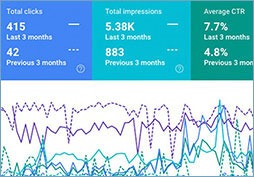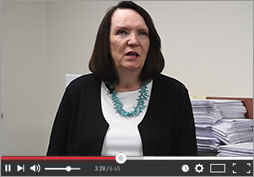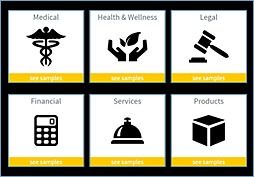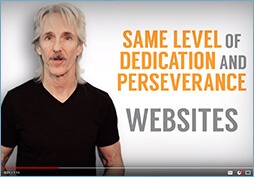PPC, or Pay-Per-Click, is a hybrid between advertising and SEO (Search Engine Optimization). It gives you the control and adaptability of an ad campaign, with the ability to target people who are searching for what you offer. Done properly, it’s incredibly fast and effective, providing both immediate results and invaluable tracking information. Here’s how we do it.
Build a list of keywords
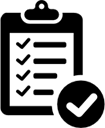 First step: we create a list of keywords that are likely to be typed into search engines by your potential customers. To do that, we use the many powerful tools we have available, combined with your own knowledge of your business, and your first-hand experience with your customers.
First step: we create a list of keywords that are likely to be typed into search engines by your potential customers. To do that, we use the many powerful tools we have available, combined with your own knowledge of your business, and your first-hand experience with your customers.
Part of our process is also to generate a number of negative keywords. Those are phrases that would be typed into an engine by people not likely to be customers for you.
Example: your business is auto repair, so you offer tuneups, among other services. We’d probably use negative keywords to filter out people that type in anything containing the words “how to.” People that include those words are generally looking for information on doing it themselves.
Create a detailed Adwords campaign
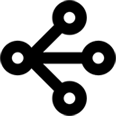 It’s easy to create an Adwords campaign; it’s much more complex to set it up properly, so that you can segment and track the performance of the various categories of keywords. This is also the point at which we write the ads (a skill in itself), and begin to configure some of the tracking systems.
It’s easy to create an Adwords campaign; it’s much more complex to set it up properly, so that you can segment and track the performance of the various categories of keywords. This is also the point at which we write the ads (a skill in itself), and begin to configure some of the tracking systems.
But that’s just the beginning. You could have a separate category for each car company (Ford, Acura, Mercedes Benz), and even go as far as breaking up the companies into models (Fusion, Taurus, Explorer, F-150).
Within each category (or sub-category), you can have multiple ads. By running them simultaneously, you see which are the most cost-effective, and can focus on and refine those.
Besides creating multiple categories of subject matter, you can run custom scheduling (just during work hours, for example), target by location (state, city, zip code, to name a few possibilities), and even reach specific types of users (like those on mobile devices). With knowledge and experience, you can separate the wheat from the chaff, and really zero in on those web surfers most likely to buy from you.
Design landing pages that deliver
 Landing pages are where searchers are directed when they click on your ads. Each landing page must be relevant to a set of search terms, as well as designed to compel the viewer to take an action (pick up the phone, fill out a contact request, download marketing materials, etc.).
Landing pages are where searchers are directed when they click on your ads. Each landing page must be relevant to a set of search terms, as well as designed to compel the viewer to take an action (pick up the phone, fill out a contact request, download marketing materials, etc.).
Example: That person searches for “ford brake service,” but is then directed to a general page about auto repair.
Will that viewer take the time to comb through the site to find what they were originally looking for? Often, they won’t; they’ll just leave.
A better scenario is for that potential customer to be directed to a landing page about brake service specifically, that also contains a list of brands worked on — including Ford. The page should also contain a phone number prominently displayed, as well as a call-to-action:
“Click here to request your appointment for a free analysis and estimate.”
In an ideal world, you want the shortest path to a sale. That means you’d like that web surfer to search for what they want, click on your ad, see your landing page, and contact you immediately. A well-designed landing page often delivers just that result.
Connect multiple tracking systems
![]() The strategy is simple: use the tracking data to calculate which keywords, ads, and landing pages are delivering the highest ROI (Return On Investment). Use that information to do more of what’s working best. In practice, it takes a lot of skill and hard work — both of which we apply in abundance.
The strategy is simple: use the tracking data to calculate which keywords, ads, and landing pages are delivering the highest ROI (Return On Investment). Use that information to do more of what’s working best. In practice, it takes a lot of skill and hard work — both of which we apply in abundance.
Also in the mix are Google Webmaster Tools and SEOMoz (search phrase and placement statistics), Majestic SEO (on and off-site linking reports), and Screaming Frog (site navigation and content analysis).
We have a record of virtually everything that happens along each viewer’s path. We know specifically — word for word — what they typed into the search engine, as well as which ad they saw, and clicked on. Furthermore, we can see the particular landing page they visited, and how long they stayed there.
That’s not all. We then can determine what action they took next, whether they filled out a form, went to another page in the site, or picked up the phone and called. Assuming we had your permission beforehand, we can even listen to the recording of the call!
Analyze. Modify. Repeat.
 Of course, none of that data means anything unless you know how to analyze it and act on the analysis. We know how. That’s what enables us to constantly refine — and improve — your PPC program. So over time, you enjoy better and better results.
Of course, none of that data means anything unless you know how to analyze it and act on the analysis. We know how. That’s what enables us to constantly refine — and improve — your PPC program. So over time, you enjoy better and better results.
Conversely, if we see ads or keywords that are delivering positive results, we can increase the amount of times they appear, as well as creating variations of both. Over time, by studying the results and adjusting the campaigns, we are able to deliver more and more “bang for your buck.”
That’s exactly what you want an ad campaign to do.
Hit ‘em again. And again. And again.
 You may not have heard the term “remarketing,” but you’ve certainly experienced this phenomenon. After visiting a site at least once, you suddenly start seeing that company’s ads everywhere you go. It’s done through PPC, and lets you deliver multiple impressions to potential customers.
You may not have heard the term “remarketing,” but you’ve certainly experienced this phenomenon. After visiting a site at least once, you suddenly start seeing that company’s ads everywhere you go. It’s done through PPC, and lets you deliver multiple impressions to potential customers.
With a 25+ year background in both print advertising and web marketing, we understand how to craft ads. Ads that 1) deliver your marketing messages succinctly; 2) get viewers to take action; and 3) promote your brand and brand imagery.
With this kind of multi-pronged functionality, it’s no wonder remarketing has become so popular.
Want to enjoy the powerful benefits of PPC?
Tired of seeing your competitors get all the customers that should be yours? Contact us to learn how we can rev up your online marketing.
Request a quote
